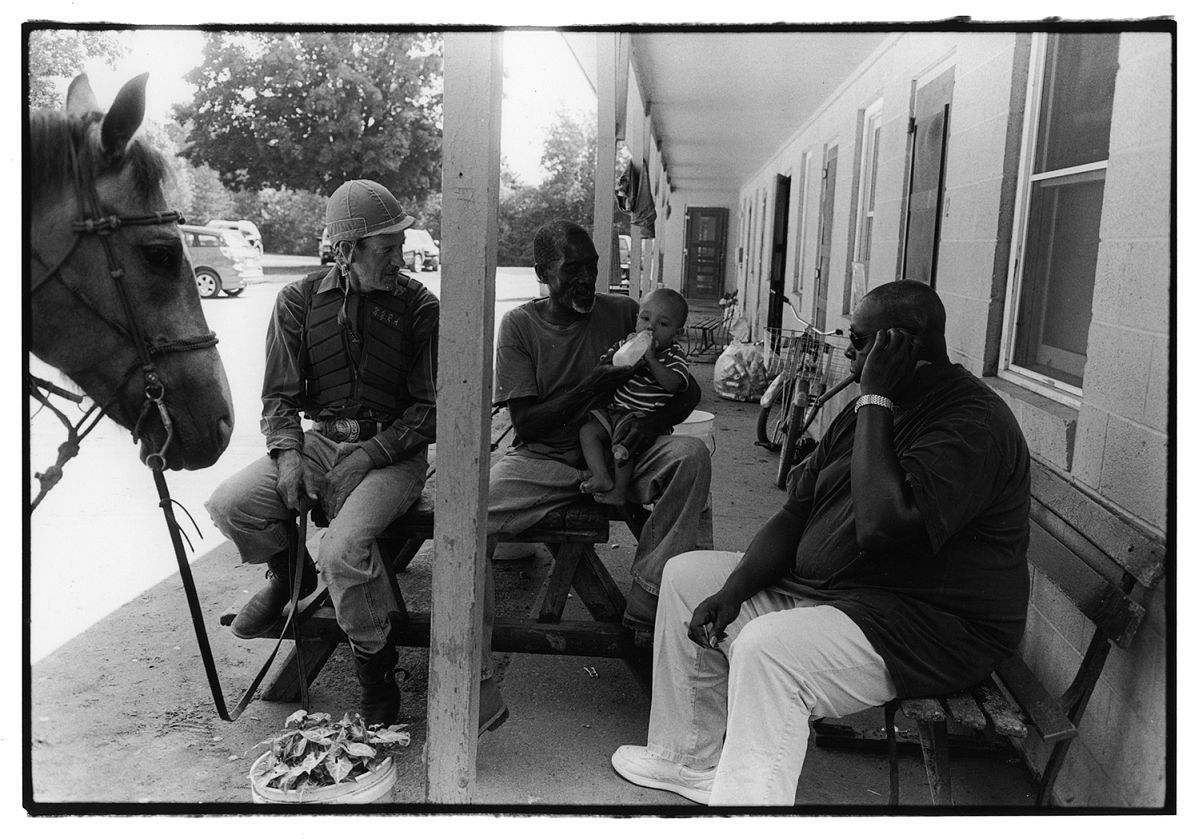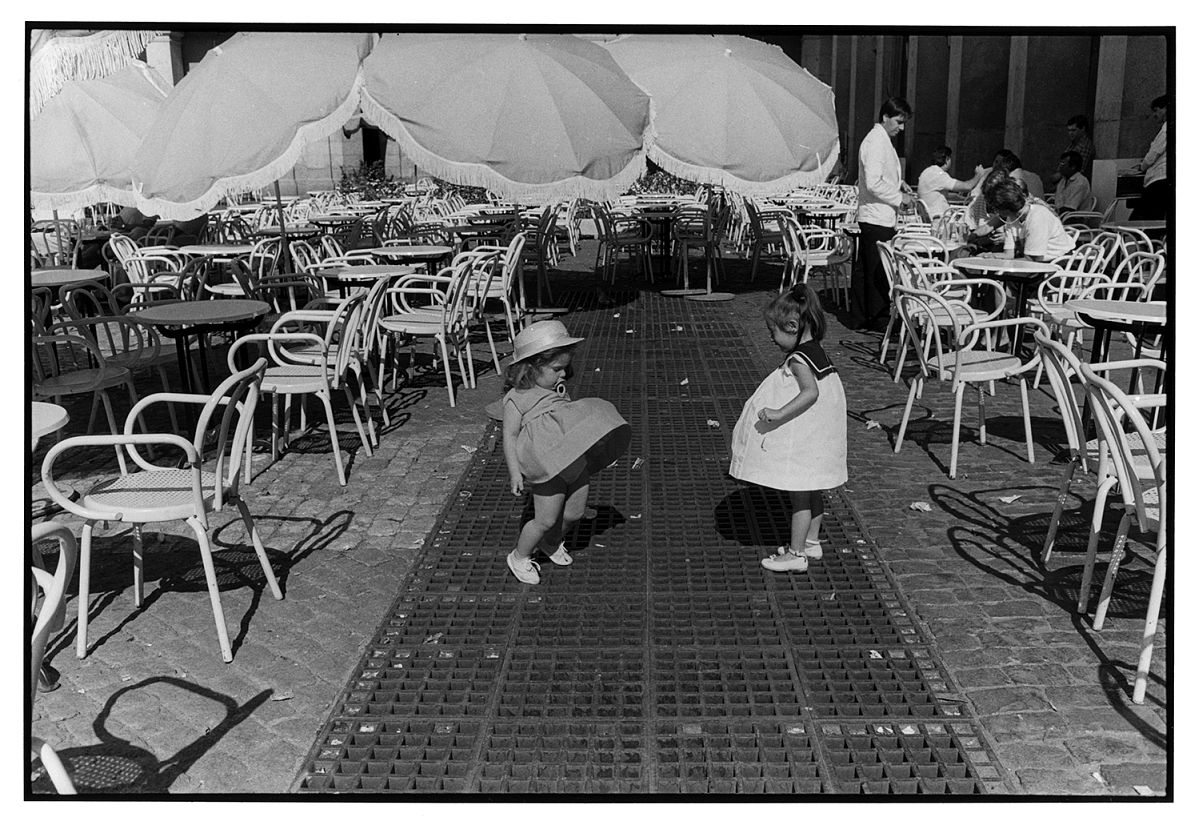In the 1980s I often attended performances at P.S. 122, the seminal venue for avant-garde performance in New York. As an artist and curator, I found inspiration, talent, and a community of intense purpose. Identity-based politicized work found its home there.
Often times, I would notice a woman, unobtrusive, off to the side, seated on the floor, taking photographs with a Leica camera. Dona Ann McAdams was the house photographer. During her tenure of 23 years, she captured extraordinarily compelling images of the raw fierceness and passion of this performance scene. From chaotic to profound, everything was allowed in this experimental space. McAdams was revered by the artists as a collaborator who could illuminate their art beyond the stage.
McAdams also adroitly captured the queer liberation and AIDS activism of that time, documenting the urgency of ACT UP actions and LGBT military members marching in solidarity against “Don’t Ask, Don’t Tell” directives. Select photos of this work, along with photos of her anti-nuclear, pro-choice, war protest, and feminist rallies, are featured in this exhibition. McAdams’ agitprop sensibility is alive and well today, as evidenced by her photographs of an anti-Trump protest and transgender Vermont gubernatorial candidate Christine Hallquist marching in a Pride parade.
McAdams works not as a detached journalist but as a fully engaged social activist. She is an empathetic artist whose subjects are not the exotic “other” but rather participants and allies in her portraiture. She invites the viewer into the particularity of place and the innate humanity of the people she photographs.
I got to know McAdams personally when we both became ensnarled in the Culture Wars in the 1990s. I was the Curator of Performing Arts at Walker Art Center in Minneapolis, where I presented David Wojnarowicz, Karen Finley, Ron Athey, and other artists who became flashpoints over the “appropriateness” of their receiving support from the National Endowment for the Arts. The surrounding controversies became a lightning rod for malicious conservative outrage.
All these artists shared P.S. 122 as their New York home, so McAdams knew and photographed them all in their full-flung provocative explorations. Despite intense media pressure, McAdams worked with the artists to protect their images from being sensationalized and demonized in conservative media outlets.
Concurrent with her theater work, McAdams spent 14 years running an arts workshop in Coney Island for people living with schizophrenia. The resulting collaborative portraits demonstrate McAdams’ profound empathy with her subjects and illuminate the joy and dignity of people often feared and maligned by mainstream society. Subsequently, McAdams did in-depth residencies with farmers in rural West Virginia and with a group of cloistered nuns in rural upstate New York, capturing the vitality and resiliency of these “unseen” or overlooked communities.
When I moved to Vermont to run the Flynn Center in Burlington, I reconnected with McAdams and her husband, writer Brad Kessler, who now raise goats on their farm in Sandgate, Vermont. At the Flynn, I had the pleasure of hosting an exhibition mounted by the Vermont Folklife Center, A View From The Backstretch, which was the culmination of McAdams’ workshops for backstretch workers at the Saratoga Racetrack. The work is revelatory. Once again, McAdams did not merely observe. She participated as a fully engaged creative partner.
For another exhibition I curated at the Flynn, Animal Power, McAdams loaned a diptych of two oxen, Lou and Bill. Animal rights activists protested when Green Mountain College in Poultney, Vermont, decided to put one of the oxen down after he became injured. In the midst of this controversy, McAdams went into the pasture with these enormous creatures and produced an astoundingly beautiful depiction of elegance and power—another political act with a social conscience.
With her expansive range of working animal photographs, including cows, horses, and her beloved goats, McAdams continues to capture the relationship between subject and artist. In these action portraits, it became clear that the organizing conceit of this exhibition was indeed Performative Acts.
When the Brattleboro Museum & Art Center gave me the opportunity to curate this exhibition, I was thrilled to work with McAdams again, to visit her farm and studio and select a sampling of her resplendent black and white images. She continues to shoot film with her Leica and print her own work in an analog darkroom, work that is of its time but timeless. It is an honor to present her Performative Acts to you. — John Killacky, Curator
Dona Ann McAdams
Performative Acts
June 22 – September 23, 2019
Brattleboro Museum & Art Center
10 Vernon St Brattleboro, VT 05301
brattleboromuseum.org

Dona Ann McAdams, Roger, Tootie holding Kyan, and Leroy, Oklahoma Training Track, Saratoga Springs, New York, 2010








